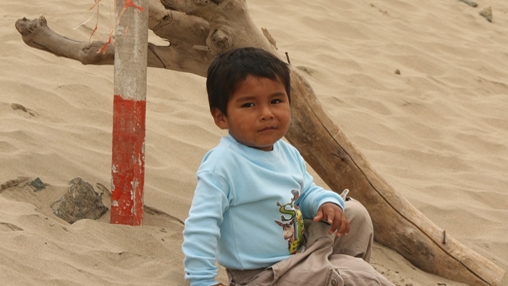December 14, 2012

Nearly nine million children under age five suffer from chronic malnutrition in Latin America and the Caribbean. This statistic is especially alarming considering that the first 1,000 days are the most crucial in a child’s life.
To reverse this situation and achieve the full development of Latin American children, 12 countries in the region decided to share good practices and begin a knowledge exchange. It should also provide economic returns for the countries given that it will ultimately contribute to increasing the population’s productive and intellectual capacity.
In a recent meeting of experts in Panama, a toolkit was presented that seeks to guarantee the health, food security and nutrition of vulnerable mothers and their children.
“If we want to reduce poverty, chronic malnutrition must be prevented at all costs. The interventions described in this toolkit have also proven to be cost-effective,” said Marie Chantal Messier, World Bank senior nutrition specialist for Latin America and the Caribbean. According to the expert, the main goal of this initiative is to promote the implementation of public policies to obtain returns on investments that the countries make to reduce child malnutrition.
Malnutrition has a much greater impact on the poorest, least educated citizens. For this reason, indigenous children are nearly twice as likely to suffer growth delays as non-indigenous children. According to experts, if the most affected countries effectively invested in addressing key aspects of nutrition, children of the region would have a greater chance of growing up healthy.
Haiti is an example of a country that is making strides in this area. Although still recovering from the devastating impact of the 2010 earthquake, the country has managed to protect the nutritional security of newborns during their first 1,000 days of life. Haiti is the only Caribbean country to adopt national programs to treat acute malnutrition.
According to Mimose Felix, the minister responsible for Haiti’s rural population, initiatives like the one in Panama have given hope for further improving the situation. “People really need good training with a method like this. They need to fully comprehend how to go about resolving the problem and obtaining positive results,” she said.
Among the issues discussed at the workshop, participants determined that all countries should strengthen the promotion and protection of breastfeeding in emergency situations by creating safe spaces for mothers and infants. In cases where infants cannot be fed breast milk, they should receive formula and ready-to-eat foods for breastfeeding infants, following the recommendations of the World Health Organization (WHO). In Latin America, anemia affects 22.3 million pre-school children, 33 million women of childbearing age and 3.6 million pregnant women.
Anything we can do to reduce child malnutrition will provide economic returns in the long term 
“Fetal malnutrition or malnutrition during early life is a risk factor for overweight, obesity and chronic disease in youth and adulthood, which are growing exponentially in the region, particularly among lower-income populations,” said WHO Representative Juan Fernando Hernández.
More than 70 government representatives from 12 countries attended the meeting. Participants agreed on the importance of having more resources and strengthening inter-institutional coordination and coordination among governments, international aid agencies and organizations to address this problem.
“Anything we can do to reduce child malnutrition will provide economic returns in the long term. This toolkit can specifically address urgent needs in times of crisis and can serve as a guide for country activities. We hope that as the countries implement it, we can eventually break the link between crises and increased malnutrition in the future,” said Margaret Grosh, World Bank economist for Latin America and the Caribbean.
The toolkit is a first step to enable malnutrition experts from the different countries to join forces to ensure that true inter-sectoral and inter-institutional synergy exists to address malnutrition in the region.











No comments:
Post a Comment